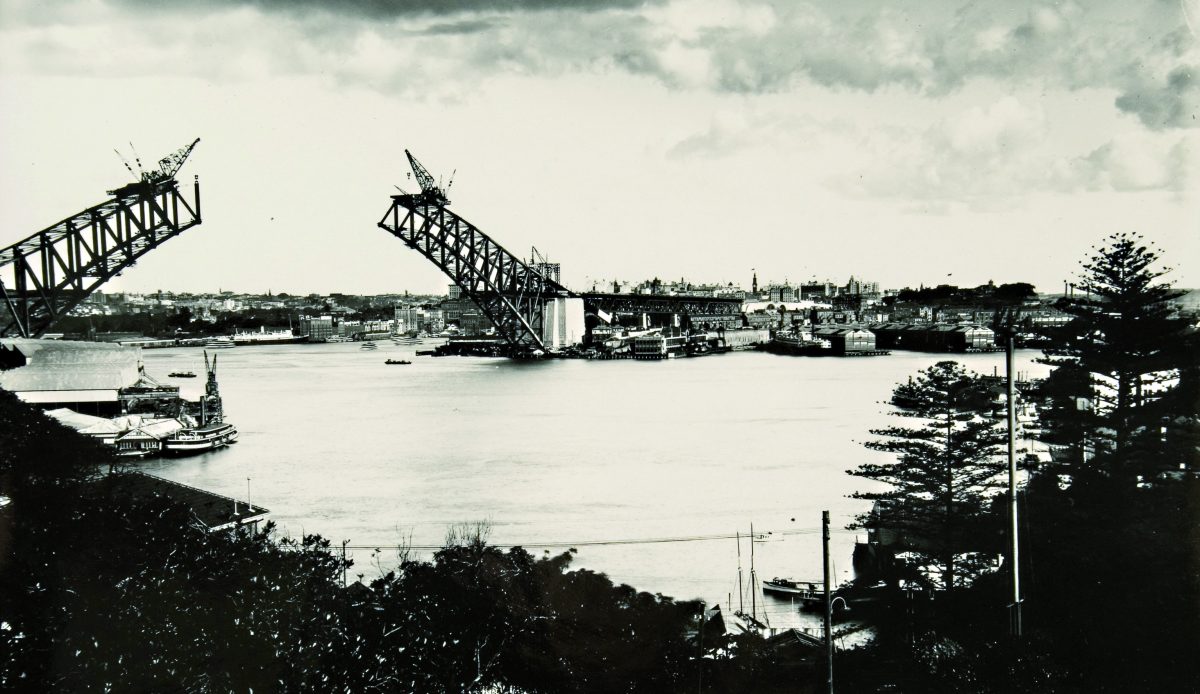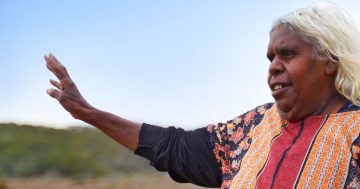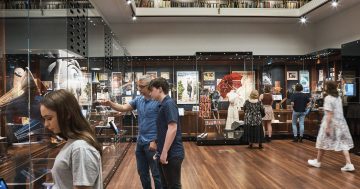
Constructing Australia: The Bridge (2006) is now available through the NFSA’s new streaming service, Player. Photo: NFSA.
One of Patrick McIntyre’s favourite documentaries in the National Film and Sound Archive (NFSA) collection is about cane toads.
The film, now a cult classic, tells the story of how the Queensland Government, in 1935, decided to import the cane toad from Hawaii to save the state’s sugar crop from the brown beetle. What it didn’t know was that while the beetle could fly, the cane toad could not. It also didn’t reckon on the fact that the cane toad would feel very much at home in its new environment – and start breeding in plague proportions.
But for Mr McIntyre, CEO of the NFSA, Cane Toads, An Unnatural History (1987) is not just a film about those ugly croakers from Queensland intent on moving south and causing environmental destruction; instead, it’s the stories that come with them.
It’s a documentary about people, of our geographical and social history, as well as being about those seriously ugly lumps of things that no one wants to find in their animals’ water troughs.
“Yes, it’s a documentary about cane toads, but it is so much more than that,” Mr McIntyre said.
“You meet all these people with different relationships with cane toads – some keep them as pets while others just want to run them over. It’s great material.”
It is also one of a tranche of 34 films released this week by the NFSA in its new Player streaming service.
Presented for the first time in this format – streaming on demand, in full, across devices and without advertising – items from the collection are now able to be enjoyed across Australia via the NFSA Player platform for a small fee.
The NFSA launched Player last year during NAIDOC Week, streaming a range of First Nation film titles, Mr McIntyre said.
“There is so much incredible content in the national audio-visual collection, and NFSA Player is an important new way to help get whole titles out there – as opposed to the popular clip-based content on our website,” Mr McIntyre said.
“This new release includes films going back to the mid-50s and early 70s, as well as more recent content, and they paint a fascinating picture of the way our nation has changed – and continues to. They’re entertaining, surprising and inspiring, but also offer great opportunities to reflect on how far we’ve come and perhaps how far we have to go. There are definitely some conversation starters in there.”
He said although many streaming services were now available, the NFSA service was unique because it held the nation’s largest and most diverse collection of Australian audio-visual material, much of which can’t be found elsewhere.

CEO of the National Film and Sound Archive Patrick McIntyre. Photo: Nic Walker
“Our Australian collection of films has roots back to 1913, with documentary life in Australia – one of the hardest things with Player is making selections from the collection because it is so rich.”
He said it had been a labour of love for the NFSA’s curatorial staff, with many finding gems in the collection, like a 30-minute drama directed by Peter Weir about a nerdy middle-class boy who wanted to be a hippy but got in with the wrong crowd.
Another staff favourite, he said, was the film Roller Derby Dolls.
“It was apparently such a thing in the 1960s and 70s,” he said.
“This was made in 2008 about this group of women who wanted to bring roller derby back. They had some great names, like Devil Doll and Dead Meat.”
Other releases in the new Player tranche include the Hugo Weaving-narrated portrait of author Tim Winton, The Edge of the World (2008), a true crime/mystery strand including films about the disappearance of former PM Harold Holt and the mysterious death of iconic designer Florence Broadhurst; and for history buffs, documentaries on the construction of two Sydney icons – The Fifth Façade (1973) about the Sydney Opera House, narrated by architect Jørn Utzon and Constructing Australia: The Bridge (2006), which looks at the conflict and the political intrigue behind the Sydney Harbour Bridge.
Learn more about the NFSA Player, or explore the NFSA.
Original Article published by Sally Hopman on Riotact.







